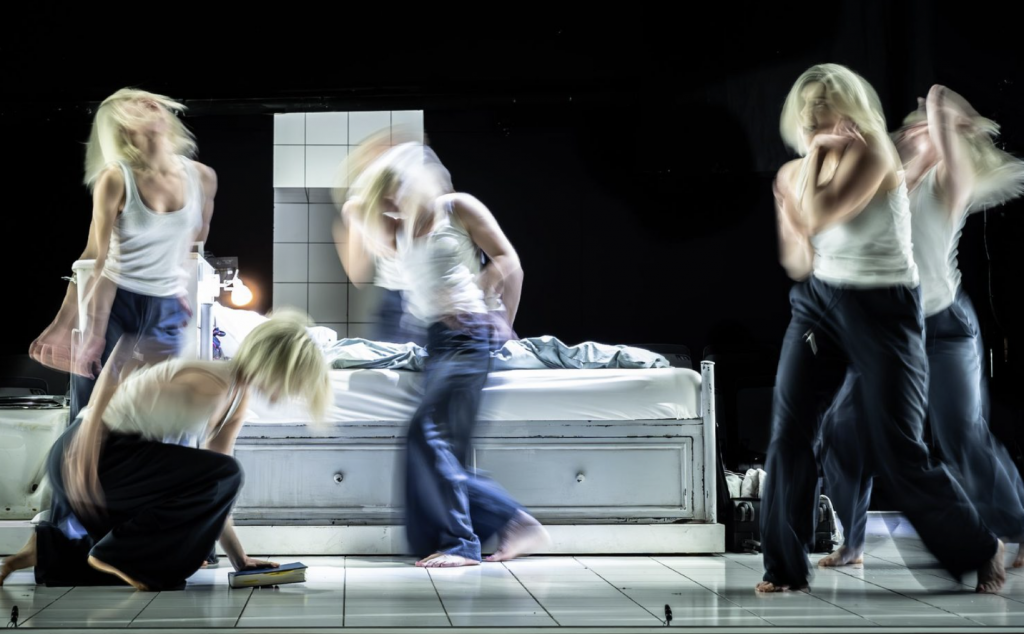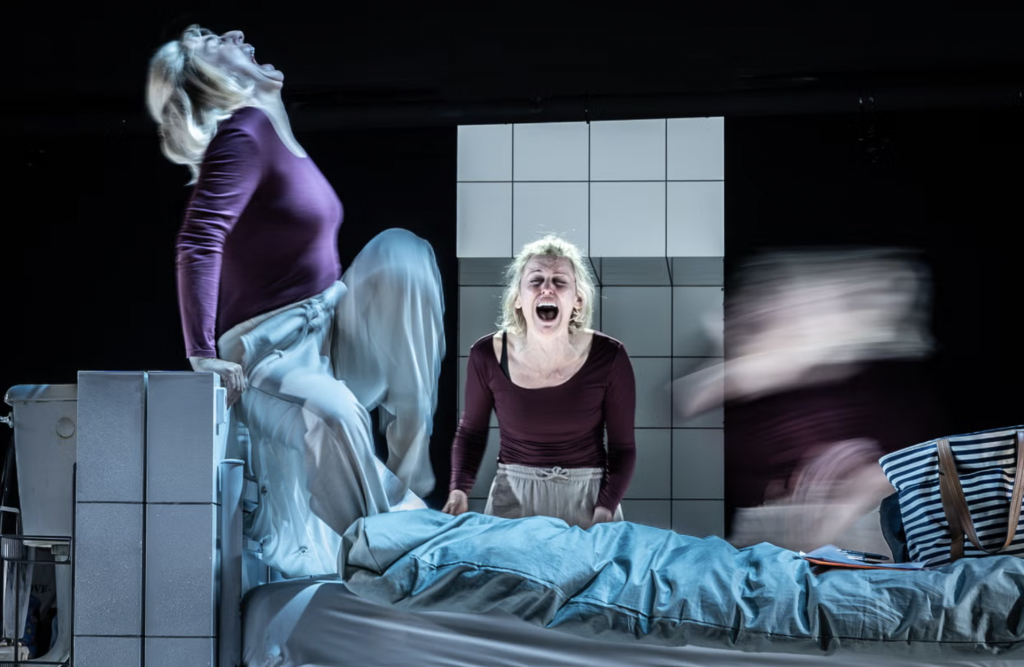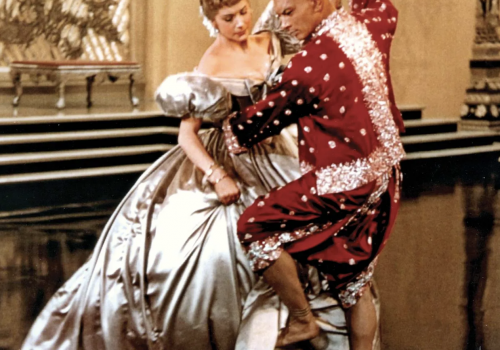I have two weeks left of my National Theatre at Home subscription, and like any girl with a dwindling direct debit, I’ve decided to go full cram session. One last binge…
People, Places and Things
Written by Duncan Macmillan and Directed by Jeremy Herrin
The story centres on Emma played by Denise Gough, a struggling actress whose life is spiralling due to addiction. After a very public breakdown during a performance of Chekhov’s Seagull, she checks herself into a rehab facility. What follows is raw and complex look at addiction, not just as a personal struggle but as a clash between performance and reality.

A moment that struck a chord with me was when Emma (I think it’s Emma?) talks about being an actor. How she lives the most intense moments of life over and over again, but with all the boring bits taken out and how intoxicating it is to live a life on stage. You get to fall in love, rage, cry, scream truths, say the exact right thing at the exact right time. You’re in a temporary “family” with your cast mates and everyone suspends their belief for a few hours and exists in this imaginary world. But then the lights come up, the play ends, and you go home. Weirdly it made me think about Grey’s Anatomy — I’ve watched the entire series more times than I can count (which is outrageous as there are now 21 seasons). But it’s become a kind of comfort show, especially when my mental health dips. I also somehow manage to forget a lot of the storylines each time. But what really struck me is this: I don’t want to be a surgeon. I wouldn’t want the years of study, the night shifts, the pressure. What I would love is to be an actor in Grey’s Anatomy. To live the drama, fall in love, save lives, discover cures — all the intensity and none of the admin. That’s what Emma was describing. That longing to feel everything deeply, to skip the monotony and go straight to the parts where it all means something. However, as Emma remarks it’s much easier to get drugs and booze than it is to get consistent acting work. So much of a jobbing actors life is spent in the relentless pursuit of the next role and waiting to be chosen. Which is really relatable, often life does just feel like the filler scenes — a stretch of admin, commuting, obligations, replying to emails. Which can sometimes leave you almost craving a crisis. Like why can’t I have a scream-fight in the rain with snotty, uncontrollable tears and someone shouting “because I love you!” at the end? Emma’s addiction is to substances, yes, but also to intensity, to control, to the illusion of being someone else. Because in real life, you don’t get a script. No one claps when you make it through the day sober. And no one edits out the boring bits.

One of the most devastating moments comes when we finally meet Emma’s parents. Earlier in the play, she rehearses her apology to them during a group therapy role play — predicting how they’ll interrupt, how they won’t say they love her, how they’ll make her feel small. So you almost expect a cathartic reconciliation when the real encounter finally happens. But instead, the conversation is almost surreal in its cruelty. Earlier, Emma had mentioned that when she cried as a child at night, it was her brother — not her parents — who came to comfort her. But why was she crying in the first place? What was happening in that house? Her father agrees that it should have been her who died instead of her brother. Her mum accuses her of self-indulgence, of thinking the world revolves around her recovery and that the only interesting thing about her was the booze and the drugs. And yet, in the same breath, they ask if she wants a Chinese for dinner. It’s that casual cruelty — veiled as normality — that’s so chilling. We also learn that Emma once broke her mother’s fingers to stop her from flushing pills. Her mum no longer plays the piano because of it. But Emma has no memory of that.And it creates this chicken-and-egg situation: are they like this because of what Emma has done, or is Emma the way she is because of them? The show refuses to let us draw a straight line between cause and effect.
I was also interested in the way recovery is presented — particularly the framing of surrender as the “true” path. The rehab centre, with its group therapy and mantras about powerlessness and honesty, is firmly rooted in the principles of Alcoholics Anonymous. The structure of the play doesn’t just use AA as a backdrop; it’s deeply invested in it as a method of healing. The repetition, the rituals, the emphasis on community and accountability etc. And for Emma, this idea of surrender — giving up control, letting go of performance — is almost unbearable. As an actor, she’s used to constructing narratives, shaping how she’s seen. The idea that recovery could come not from strength, but from yielding is terrifying. Still, the play resists making recovery feel neat or guaranteed. It portrays relapse, resistance, denial — the whole messy, non-linear process of change. And in that, it suggests that AA might be one path — a powerful and structured one — but it ultimately only works if a person is truly ready. Maybe it’s less about finding the “right” method, and more about hitting a point where change feels not just necessary, but possible.










Leave a Reply